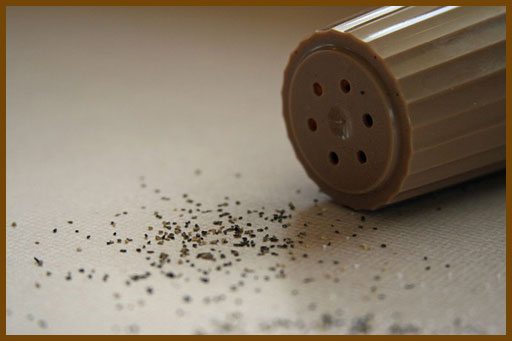
Throughout human history, the struggles of food acquisition, preservation, and flavor enhancement have shaped the prevelance of spices and food additives such as Piper nigrum in the human diet. Black pepper is possibly the first organism to be used regularly as a food additive and preservative. Although salt proves a more effective preservative due to the ability to cure and dry out organic material, the antimicrobial potential of black pepper.
The berries of pepper, as it is commonly known, can be utilized either ground or whole in conjunction with foods. Peppercorns are commonly used whole in soups and stews or to coat the surface of meats before being heated. Ground peppercorns are the most widely used form of the plant, and can be found incorporated into almost every style of food worldwide.
Piperine is a chemical present in high quantities within fresh peppercorns. This spicy antimicrobial chemical is responsible for the easily recognizable heat and flavor of black pepper. Piperine is highly concentrated in both the outer coating and inside the peppercorn itself. Piperene is volatile, and once the peppercorns are ground any exposure to the air for long periods greatly reduces the amount and potency of the chemical.
To read more about the medicinal properties of P. nigrum, click here >>
Design: Adam Haggerty - UW La Crosse - Last modified 4/16/2011
